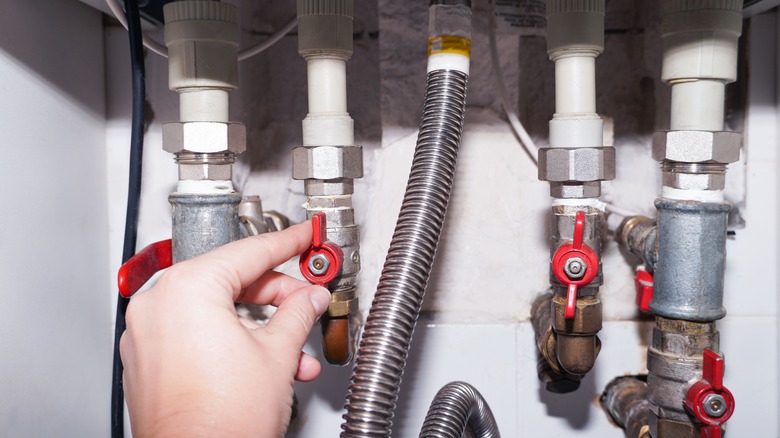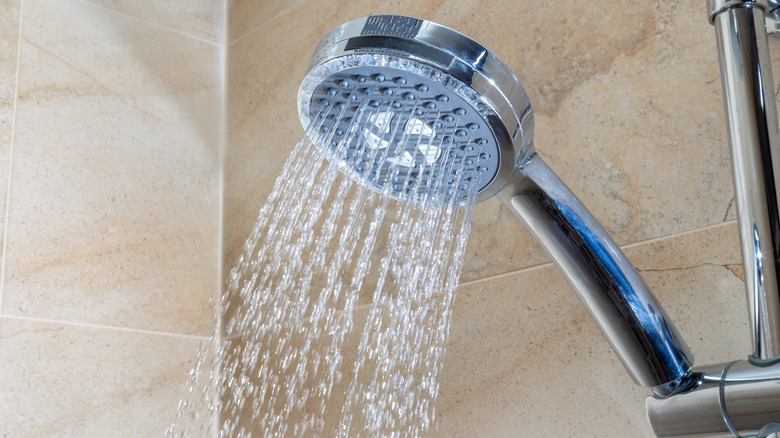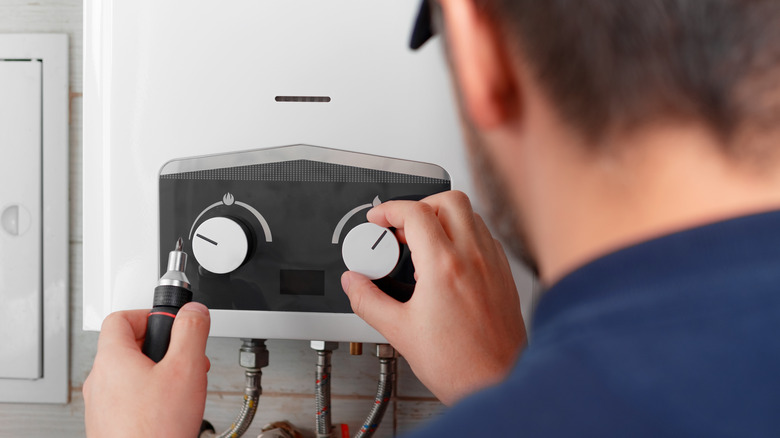Flushing Your Water Tank Might Be The Secret To Cutting Back On Your Hot Water Bill
Everyone knows the dread of opening an unexpectedly high water bill at the end of the month. It can lead to tension with household members, accusations about who takes the longest in the shower, and desperate resolutions to swear off bubble baths for life. But before committing yourself to a strict regimen of cold showers, ensure the problem isn't with your heater itself. Naturally occurring sediment can build up in your heater tank over time and keep it from running effectively. Flushing your water heater tank regularly will help clear out any sediment, making your heater more efficient and saving you money (and headaches) in the process.
Sediment buildup can wreak all sorts of havoc on your running water, from odd noises to rust-colored water to your taps just not running as hot anymore. Even if your water heater seems to be running fine, periodic checkups will make sure it stays that way. Flushing your tank is part of recommended water heater maintenance.
Where does sediment come from?
No matter where you live, the water running through your pipes contains naturally occurring minerals like calcium and magnesium. While harmless (and potentially even good for you), these minerals can build up over time and form solid deposits when warmed by your heater. This prevents the heating element from having proper contact with the water in the tank and makes the whole process less efficient.
Minerals can build up in any water heater, but heater tanks are especially prone to collect sediment if connected to a private well or in areas with hard water, a term for excessively mineral-rich water. If you've noticed spots on your glasses after they come out of the dishwasher or a filmy feeling on your hands after washing them, hard water is probably the culprit. If you deal with hard water, you should flush your water heater two to three times a year to avoid sediment buildup. Otherwise, the usual recommendation is to flush your heater at least once a year.
How to flush your water heater
Experts recommend calling in a professional if you're unfamiliar with heater maintenance or it's been over a year since you last flushed your heater, as this means there's a greater chance for complications while clearing the tank. The cost of having a plumber check on your heater should run you between $75 and $200, assuming no additional issues or repairs are needed. Plumbers can flush your water heater during routine maintenance while also making sure your heater is working correctly and doesn't need to be replaced.
If you're familiar with home maintenance and comfortable turning your heater and water off and on, it's possible to flush your water heater on your own. This requires attentiveness (the heater is, unsurprisingly, hot and can cause burns if you're not careful) and the ability to run the drained tank water outside with a hose or collect it in buckets and pour it out as you go. The process should take between two and four hours. Make sure to follow instructions carefully, as flooding from improper drainage or getting air in your water lines can create even more problems.


